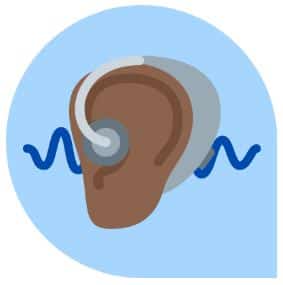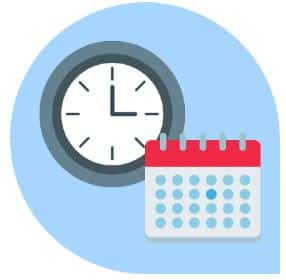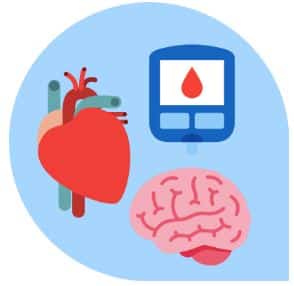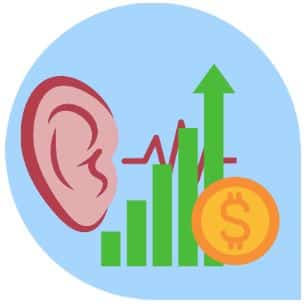
Terry Mactaggart
by Terry Mactaggart, President and CEO, Summus Hearing
The case for extending the reach of hearing health services continues to build. Credible research summarizes country and, occasionally, continental status. Global updates are also in. Universally these studies underscore the extent of the public hearing health problem, the mounting costs it creates and, occasionally, ways in which it could be alleviated. And we know from our own extensive data sets that these estimates tend to be understated! We’re anxious to “Move the Meter” – engage many more thousands –ahead!
So what is happening? Hearing aid innovation continues. A possible “cure” for certain types of hearing loss is being explored. Results for the first year of over-the-counter device availability in the United States are tabulated.
Individually and together, these developments are progressive. But are they really making a difference if the goal is to stimulate many thousands more to understand their hearing status and take account of the actions indicated to preserve and/or rehabilitate it?
Past posts have argued that as more extensive analysis is undertaken, shortcomings in hearing health awareness and action continue to grow among all age cohorts. We are gaining a better understanding of the reasons why those who know their hearing status tend to delay. And we understand from emerging research that the stakes of maintaining the status quo have become more severe.
Reducing this dilemma to its bare essentials may shake out as follows…
- Hearing is a tricky sense as problems (particularly permanent losses) usually develop over time – they kind of “sneak up”;
- Unlike sight, early decline can often be managed by finding new ways to get by – learning to “re-hear just good enough”;
- Research indicating the perils of delay, albeit still nuanced, is under communicated – not nearly enough people know about it;
- The industry continues to focus primarily on selling hearing aids, retaining most of its expensive business model.
Our extensive, structured and interpreted hearing test results across a wide demographic indicate that those who should be considering some form of hearing instrumentation represent only about 30% of the total. Adding “Mixed” results could add, upon further evaluation, another 10%-15%. The majority (>>55%) test either “Normal” or “Conductive”.
Yet most of the testing being offered across the board is seeking or confirming hearing aid candidates. That is to say, over 50% of those tested are essentially being ignored when it comes to hearing health and maintenance. Granted these findings are based on our years of advanced screening using pattern recognition technology in a variety of settings in the US and Canada, mostly nonclinical. They are indicative, however,
And perhaps the most important conundrum of all. Not nearly enough people are tested and, when tested, are not evaluated rigorously, without bias.
One way of starting to address these questions is to break out the “hearing problem” into various components examining the state of play with each. As reported in an earlier post, recently at Summus we came up with the following infographic highlighting seven common issues.
While simplified, the following comments still appear valid.
 1. Only 2% are tested
1. Only 2% are tested
This estimate for the United States is dated and may be different today. In any event, it’s a very low percentage of the relevant population and stands out when compared, say, to testing for eyesight or blood pressure.
Conclusion – Not anywhere good enough!
 2. Testing, when done, is often inadequate
2. Testing, when done, is often inadequate
Screening tests abound, particularly online. But unless undertaken by an unbiased provider, these tend to be skewed towards acquiring hearing aids. Adequate interpretation of results is a problem as almost all lack that capability.
Conclusion – This bias needs to be rectified if an entry into one’s hearing journey or a check along the way is to be trusted.
 3. Wait time between awareness and action is too long
3. Wait time between awareness and action is too long
5 years minimum, 10 years maximum defines the range, the median appearing to be 6-7 years; And that applies only to those who have been tested and ultimately decide to act!
Conclusion – Obviously a “Capital P” problem.
 4. Relationships with other disease states require greater emphasis
4. Relationships with other disease states require greater emphasis
Co-morbidities have multiplied and become more obvious.
Conclusion – In addition to further research, these relationships provide promising leverage. Much more could be done to insert a hearing test as part of the follow-up protocol when a disease state is detected or being managed.
 5. Learning and behavioral issues need to be confronted
5. Learning and behavioral issues need to be confronted
We know that undetected and untreated hearing loss compromises the learning and lifestyle trajectory of many children.
Conclusion – Testing of public-school age children should be mandated, and in many cases re-established.
 6. Key healthcare providers are left out
6. Key healthcare providers are left out
This problem is enormous as family physicians and pharmacies (to name two prominent exclusions) are not connected sufficiently, if at all, with hearing health.
Conclusion – The imperative of mandating physicians to counsel and test appears to be gaining ground. More pharmacy chains are adding hearing as a new revenue source. Engaging both fully would make a significant difference.
7. Productivity loss and social costs are too high
Billions are spent annually, often combined with other costs and therefore hidden.
Conclusion – Freeing up even a third represents a large amount that could be allocated to other pressing, underfunded public health problems.
That same post went on to outline several areas of policy and collaboration that, over time, could make a positive difference – maturing the hearing ecosystem to approximate what has been achieved in other disease arenas.
Upon reflection, that’s a Big Ask – likely too much until family doctors become much more engaged and more funding (both public and private “impact”) is committed. In a word, we’re still too siloed.
Given that assessment, we at Summus are embarking on a significant project aimed at addressing aspects of the problem. For some time we have referred to our mission as providing “Hearing Health Guidance” rather than simply ”Hearing Testing”.
Providing a competent screening test on an internet-connected device at any time is an obvious entry point. The more important aspect in the application of ” Hearing Triage”, a term we set when our proprietary pattern recognition algorithms allowed pure-tone thresholds to be sorted into four standard audiological categories (read more here). From there we are able to produce and send a medical grade report as well as coach the user about what next steps make most sense given his or her classification.
While this technology is available in English, French and Spanish and has been widely applied, it’s impact in “Moving the Meter” is still limited. Most who test Sensorineural, for example, when consideration of hearing aids often represents an effective response, balk at taking that next step. Frequently, this delay continues for some time, three to seven years being commonplace. Likewise with other classifications, when used within the medical environment tend to be followed to a greater extent.
The issue we’re grappling with involves providing guidance that takes account of age, gender, lifestyle, and other health conditions. Messaging to a 42-year-old male in a high-paced job who plays in a band, for example, should be quite different than to a 72-year-old female encountering problems playing bridge with her friends. When combining classification, age (in cohorts), comorbidities and “lifestyle”, a complex array of messages results – 100’s in fact. And if somehow, user response to the original message can be captured, follow-up messaging can be created thus moving the user further along in “the Journey” while compounding the technical challenge of continuing the follow up even more.
What’s sought is a process that “nudges” the user by taking account of attitudes and behavioral differences – an innovation that is beginning to be talked about with little evidence of becoming mainstream in healthcare to date. The recent isolation of archetypes or hearing postures for different individuals is one early example in the hearing space.
Our spec has a roadmap of how this conundrum could be approached using a combination of large data lakes, previous knowhow with an added dose of AI.
We anticipate experimentation with and acceptance of this enhanced form of guidance can ultimately make a difference with several of the issues cited above. Success will depend on timely financing and interplay with a variety of partners we wish to reach out to.
About the Author
Terry Mactaggart, MBA, is the president and CEO of Summus Hearing. He can be contacted at terrym@summushearing.com or visit https://summushearing.com






